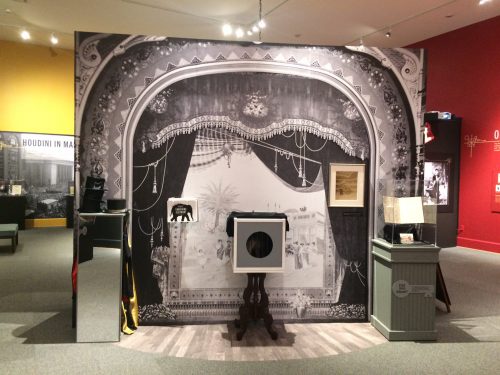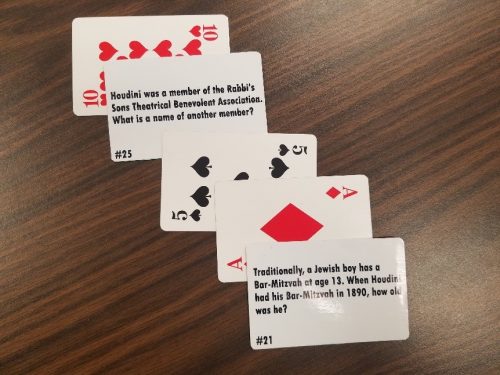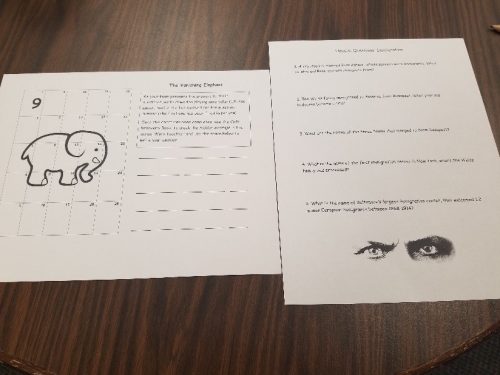Zen and the Art of Educational Programming

Blog post by JMM intern Marisa Shultz. To read more posts from JMM interns, past and present, click here.

As I have been working with our staff on the “Vanishing Elephant” educational program, I have been contemplating the steps that it takes to build a successful educational program. I am convinced that even though it may seem chaotic at times, there is an underlying process. While some may call them by different names, here are the basic steps:
1. Conceptualizing
2. Drafting
3. Visualizing
4. Revising
5. Implementing
6. Revising
7. Modifying
Conceptualizing and Drafting
Conceptualizing is the seed of an educational program; it is the idea that is inspired by its subject. This is the broadest and haziest stage, but it is always exciting because the possibilities are, literally, endless. The program, however, really begins to form in the drafting stage, which takes the inspiration and begins grounding it in reality; this is the stage where we have a general outline of activities and begin prototyping the items and props.
I arrived about halfway through the drafting stage for the “Vanishing Elephant” program. By the time I began work on it, the outline had been decided:
Visitors will be divided into five groups and each visitor will get a magnetized card; the card will have a question on one side, and a playing card face on the other. The visitors will get some time to find their answer in the exhibit and then check their answers together as a group. Then based upon a particular arrangement of their cards, the teams will have to crack the message hidden in the card faces.
Additionally, fabrication on the program had already begun. The questions were already developed, and the magnetized board and cards were already out for production. During this stage, I helped prototype the code books and began the fabrication process on those.

Visualizing
One of the things that challenged me during my student teaching semester was classroom management (the layout of the room, what materials to have prepared, when to hand out said materials, timing activities, etc.). I overcame this by visualizing the lesson step by step from the perspectives of my students and myself. During this visualization, I focused on the practical aspects of the lesson, rather than the content, and made sure to prepare myself accordingly. The same technique can be applied to the creation of education programs.
After independently visualizing the “Vanishing Elephant” program and meeting about our concerns, the education department decided to make some changes…
Revising
Someone much smarter than me once said that all writing is revision… the same could be said of lesson planning and educational programs! Once the program has been visualized, oftentimes changes need to be made. The beauty of this step is that it is proactive; these changes happen before the program reaches an audience. For the “Vanishing Elephant” we created two new worksheets, got an easel for the magnetic board, made bags for easier organization, and added time for the visitors to first explore the exhibit and “get their ya-yas out!”
The program at this point definitely looks different than it did in the drafting stage, but that is a good thing!

Implementation
The next step is to introduce the program to a group of willing test subjects. It is critical in this stage to be both fully aware and completely honest with yourself regarding what is going well and what is, frankly, not. It is because of this personal honesty that can lead us once again to the revising stage, to change and improve the program.
For “Vanishing Elephant,” based upon feedback from our first testing group (thank you again to our wonderful docents and volunteers), we decided to not go over all 25 questions as a group, but rather choose 10 of the most important ones.
But Marisa – you mentioned zen in your blog title! Was that just a clever reference to Zen and the Art of Motorcycle Maintenance or are you actually going to talk about the concept of zen?
It’s both! Zen actually does have something to do with educational programs, and it comes in the form of modifying! Sometimes, no matter how carefully planned, things do not go as anticipated. Sometimes there are more students than anticipated; sometimes visitors arrive late. Sometimes an item goes missing, a space can’t be used, or the visitors need a specific accommodation. No matter the reason, education programming requires us to be flexible, to roll with the punches, and to allow our instincts to lead us.
It just goes to show that in planning for educational programs, our work is never truly done!
